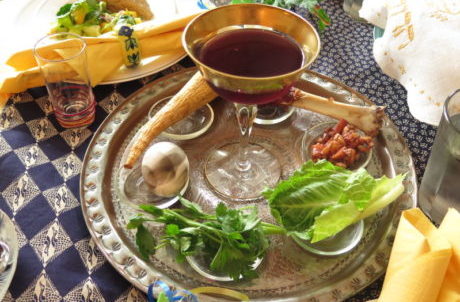Jewish households and synagogues across the United States are preparing for Passover, one of the most sacred and widely celebrated holidays in the Hebrew calendar.
The name of Passover comes from the traditional story that God “passed over” enslaved Jews in Egypt and saved them from a plague, allowing them to escape into freedom.
Each spring observant Jews prepare the traditional Passover meal known as the “Seder” and retell the story of how God commanded their prophet Moses to lead the Jews out of Egypt. According to tradition, they wandered in the Sinai Desert for 40 years until finally reaching the promised land.
Children have a key role in retelling the Passover story. During the Passover Seder, it’s traditional for the youngest child to ask four questions as a way to explain why the night is special. Children also enjoy searching for the hidden “afikomen” (piece of matzo) for a prize.
The traditional Seder plate includes unleavened bread (known as matzo) to commemorate the Jews’ quick escape during the night when they could not wait for their bread to rise. A bowl of salt water symbolizes the tears Jews shed during their time as slaves in Egypt, and eating bitter herbs is a reminder of the unhappy years of slavery. A mixture of fruit, nuts and wine called a “charoset” represents the mortar the Jews prepared to lay bricks when they were slaves, and a bone is a visual reminder of the lamb sacrificed before the first Passover meal.
The date of Passover each year is determined by the Jewish calendar, which is based on lunar months that begin each new moon. Passover begins on the 14th day of the month of Nisan — the first month of spring. This year, Passover begins on the evening of March 30 and ends in the evening of April 7.
Last year, President Trump called the Passover holiday a “story of freedom” of an “incredible people who were liberated from oppression.”
Mary Jane Maxwell









